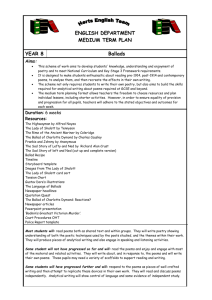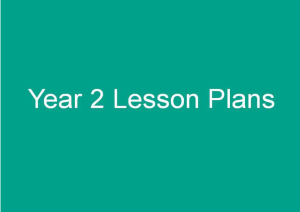Introduction No Pens Day Wednesday lesson plans and activity
advertisement
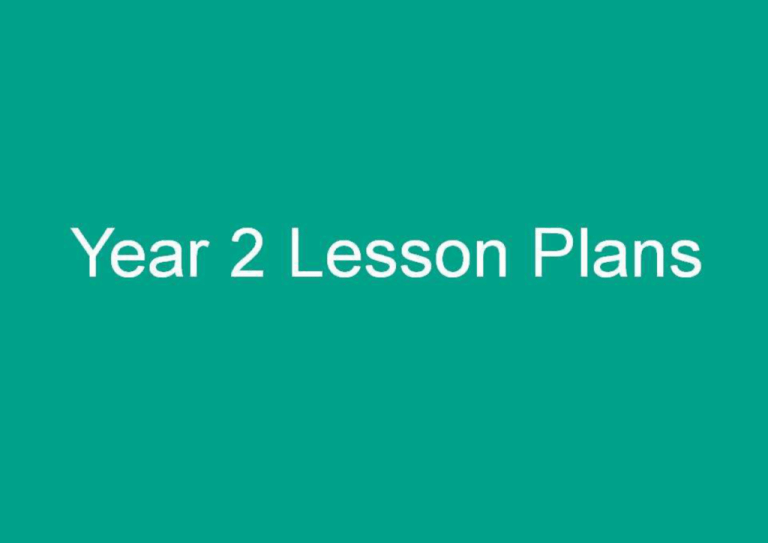
Introduction No Pens Day Wednesday lesson plans and activity templates have been created by specialist teachers and speech and language therapists and quality assured by practising mainstream teachers. Lesson plans These were developed by taking example plans for September from one school’s planning as a starting point. As all schools will be covering different topics and have different ways of planning, the lesson plans provide an example for schools to adapt, though they can be used as they are if this fits in with your planning. Lesson plans aim to follow good practice principles; e.g. They identify explicit learning objectives Support use of questioning, using Blooms taxonomy, to support learning Include plenary sessions that encourage pupils to reflect on their learning through assessment for learning strategies Some lessons include reflection on how the “no pens” theme of the day has affected learning. This could be a discussion you could have in any lesson in order to gather pupils’ views on how an emphasis on talk in the classroom has impacted on their learning and enjoyment of lessons. Each lesson plan also has key vocabulary identified, signposting to the vocabulary section of the activity templates. Vocabulary is key to all pupils, particularly those whose language is not at an age appropriate level or pupils learning English as an additional language. Teaching vocabulary explicitly as part of the lesson, using tried and tested strategies can make a significant difference to these pupils in particular. A speaking and listening objective has also been identified for each lesson. Some have been taken from QCA guidelines, whilst others have been taken from our Universally Speaking guides (available to download and order for free from www.hello.org.uk/resources), which track language development throughout the primary years. Plans are available for every lesson in primary school across the year groups. Activity templates In addition to lesson plans, we’ve provided activity templates (separate download on www.hello.org.uk/no-pens-day-wednesday), which are more generic and can be adapted to any lesson. These give some information about the activity and how it can be implemented, highlighting any resources / links that might be useful to support that activity. These activities can be used within any element of a lesson - as a starter activity, main activity, plenary or as methods of recording learning. See also separate guidance on ways of recording without using pens (available on www.hello.org.uk/no-pens-day-wednesday). Year 2 Lesson Plans Class: Teacher: Lesson objectives: To recognise traditional stories To know characters, themes and settings Date: Previous learning: Knowledge of a variety of fairy tales Activity Starter: Teach 3 words - Ogre, beanstalk, harp. Use picture prompts Introduce each word – ask children to ‘think, pair, share’ a meaning for each word Choose pairs to share their explanations As a group - what is the first sound, the last, clap the syllables, what category does each word belong to? Use the I CAN Communication Cookbook word magic template below to help Give the meanings for children to guess the word Vocabulary: Ogre, beanstalk, harp Main: Ask the question? - What sort of stories might have ogres, beanstalks and harps in? - What sort of stories might we learn about today? Jigsaw activity 1.Give each child an object or picture from a variety of fairy tales (castle, ogre, Jack, pumpkin, harp, cow, wolf, beans, pig, slipper, sticks, straw, bricks, ragged clothes, gold coins, prince, Cinderella, Ugly Sisters, apple, mirror, dwarf, Wicked Queen) 2. Ask children to move around and, by talking to each other, get together in groups with all the other children that have things from their story. 3. In the groups - what is your story? What are the main things that happen in the story? Where does the story take place? Are the characters ‘good’ or ‘bad’? How does your story end? 4. Make a podcast from your group using Easi Speak microphone - what is the story, who’s in it, where does it takes place, how does it ends Plenary: Listen to podcasts Question - what things are similar in the stories? What are differences? What other things could we find out about traditional stories? Lesson: English – Traditional tales Speaking and listening objectives: Take turns to talk and listen, and respond in two-way conversations Identify what is important and unimportant information Differentiation Picture prompts for each word Resource Picture prompts for each word on A4 cards or IWB Management of ‘pair, share’ groups Use Word Magic template below, taken from I CAN’s Communication Cookbook, available to order from www.ican.org.uk/cookbook Forced alternative target questions - e.g. would a pig be in Jack and the Beanstalk or Red Riding Hood Bags of pictures/objects per group; picture resources www.picsearch.com, Clicker 5 picture library, fairy tale charades cards www.tes.co.uk/teaching-resource/Fairytalecharacter-cards-possibly-for-charades-6068488 www.k-3teacherresources.com/storysequencing.html Management of grouping For target children – ‘find everyone who has things from........’ Prompt cards to focus group discussion – good/bad character, setting Narrative cue cards – ‘What’ happens? ‘Where does it happen?’ ‘Who are the characters?’ www.blacksheeppress.co.uk Easi Speak recorder http://www.digitalblue.org.uk/Voice_Recorders.ht ml Assessment for learning: Children to use self assessment checklist to see how well they worked in the groups http://www.teachfind.com/nationalstrategies/seal-working-together-self-review-checklist In groups, ask the children to think about how they know what is important information when listening to the stories and what is less important – use traffic lights to show how confident they are with this objective. Year 2 Lesson Plans Class: Teacher: Lesson objectives: To know what maps are for To know that maps share common features Date: Lesson: Geography – Map work Previous learning: To have investigated features of their surroundings Speaking and listening objective: Join in a discussion about an activity using topic related vocabulary Activity Starter: Active listening - ‘Simon Says’ with direction words Vocabulary: Forward, back, left, right, up, down, stop, next to, symbol, sign, route Teach vocabulary using strategies and materials suggested in the activity template pack. Highlight vocabulary for the lesson and explain that all children will have the opportunity to use these words throughout the lesson – encourage all children to listen out for them Main: Introduce lesson with the slide show of different maps Question - what are these pictures of? Children talk about – where they have seen maps being used, when they have used a map. Jigsaw activity - give each child part of a cut up map (photocopies or printed images from slide show). The children are asked to move around the room talking to others about the features of their map part, and find the other parts of their map. In groups - put the pieces together to make the map. Take a photo of the reconstructed map. Differentiation Visual prompt cards for direction words - e.g. arrow pointing up/down Resource Give more obvious elements of map pictures to lower achieving pupils PowerPoint - Map images Ensure lower achieving children ask and answer the more concrete questions “who and what” rather than more abstract “why” question Printed images from the slideshow, photocopied maps - cut into jigsaw pieces Camera Structured discussion - how do I know what this map is of? Who might need this map? Why would they need this map? Children re-gather to report back on 3 things they have found out - what, who, why. Plenary / Assessment for learning: What have we learned? What are the common features of all the maps (symbols, signs, route marking, key)? What else do we need to learn to do with maps? ‘Tell your neighbour’ - Class teacher to display one of the words from vocabulary list and children to tell their neighbour a sentence or piece of information which includes this word. Share some examples with the class. Homework: Find an old map or leaflet with a map. Make your own map jigsaw or draw a route map of your journey to school. Give your mum/dad/carer directions to follow on how to get to school. Year 2 Lesson Plans Class: Teacher: Lesson objectives: To explore the effect of the fire on people in London Date: Previous learning: To have listened to recounts of the Fire To have seen images of the Fire; to have understood that the fire occurred long in the past Activity Starter: What do we know already? Speedy think - one minute to think of something you know already about the Fire. Then share that idea with your partner and any other things you can remember. Structure thinking - ask children to think about when was it, what happened, where Revisit key vocabulary Vocabulary: Emotions vocabulary, flames, destroy, loss Teach vocabulary using strategies and materials suggested in the activity template pack Main: Tell children that today we will be thinking about the people who were involved in the fire. How did it affect them? How did they feel? Use TES PowerPoint presentation to re-tell the sequence of events - encourage children to actively think about how it might feel to be in London at the time of the fire, how people were affected. Round Robin - collecting ideas on feelings and how affected Lesson: History – The Great Fire Speaking and listening objective: Work in role in small or large groups. Pupils can improvise and respond to a variety of actions and situations. Differentiation Use pictures of the fire of London for target children to promote thinking Resource Emotions icons (from SEAL resources) http://teachfind.com/n ationalstrategies/sealresource-sheetwords-core-feelings Eye witness accounts and background detail http://www.nationalarchives.gov.u k/education/lesson47.htm PowerPoint presentation http://www.tes.co.uk/teachingresource/Y2-GREAT-FIRE-1-2Term-Plan-Lessons-Resources6086407/ Support questioning Hot seating Select key characters/ people from the event – Pepys, King, Thomas Farrinor (baker), a child with question cue Other sources card, e.g. what, and a home owner. In groups, assign a character to each group. http://www.fireoflondon.org.uk/ Remind children of being ‘in role’ - e.g. talking in first person, speaking from the point of view where, who Question cards available in the of another person etc. I CAN Communication Cookbook What questions do I want to ask this person? www.ican.org.uk/cookbook One child in hot seat, others to interview in role – what did you see, what happened to you, Digiblue and / or Easi Speak how did you feel, what will you do now? microphones to record outcomes Record or video interviews Plenary: What did we learn? - each group say one effect the fire had on people in London Ask a specific child (good example) to repeat being ‘hot seated’ - draw attention to their use of tone of voice, stress on words and gestures. If not present, then model how they could be included to enhance the performance. Assessment for learning: use traffic lights to say how well they worked in Homework: Find out what you should do if you see a fire starting groups Year 2 Lesson Plans Class: Teacher: Lesson objectives: Collect and record data Read data and generate questions Date: Lesson: Maths - Data Previous learning: Tallying Recording data in a variety of forms Speaking and listening objective: Ask questions using appropriate question words Activity Starter: 20 questions - I’m thinking of a number between..........’ Vocabulary - higher, lower, 2 digit, 1 digit, odd, even Vocabulary: Higher, lower, 2 digit, 1 digit, odd, even, tally, data, more, less Teach vocabulary using strategies and materials suggested in the activity template pack Main: Problem solving Introduce the idea of a class survey of 5 pets - but remind children that it is ‘no pens’ day’ so we cannot write numbers or use a tally chart! How else could we record what children like with some of the maths resources we have in the classroom? Show an assortment of concrete counting materials – elicit ideas as to how they could be used e.g. a Sumthing string for each animal, a Unifix tower for each animal, same colour beads/counters for a particular animal. Class survey Assign children to 3 groups with a set of concrete apparatus per group Each group creates their own tally chart based on their own preferences. What do we know? Children discuss what they know from their data and create their own questions to ask and record them on Talking Tins Remind children of possible question words - what type of answers would you expect to get from this type of question word (include open and closed questions)? Answer my question Leaving the tallies (whatever form) and the Talking Tins, rotate the groups Each group visits the other tally charts, listens to questions on the Talking Tins and answers them from the data. Plenary: What did we learn? - was it easy to understand what the data meant? We can record data in different ways. Assessment for learning: Children to use number cards (1-5) and rate how well they felt they did. Comment on how they managed to generate questions. Discuss and evaluate Differentiation Narrow range of numbers for lower achieving children; visual representation Give sentence starter to support questioning “Who has a .....” “How many...” Give specific roles in groups to lower achieving pupils Give examples of how tallies can be represented Resource Number cards Pets pictures - dog, cat, rabbit, guinea pig, fish Sumthing beads Counters and pots Beads and laces Unifix cubes Numicon Each group - a set of pet picture cards and one set of concrete apparatus Cue cards - altogether, most, least, how many Talking Tins or other voice recorders Homework: Think of a way of doing a traffic survey past your house or on your journey home - without writing anything down! Year 2 Lesson Plans Class: Teacher: Date: Lesson objective: Previous learning: Children will know what they are good at (strengths) Children will have had experience of and be able to talk about things they want to get talking about themselves better at Activity Starter: Swaps – all the children sit in a circle. The teacher explains that the children must find a new place if what s/he says applies to them. e.g. ‘Find a new place if...’ you like cheese and onion crisps you like splashing in puddles you enjoy helping other people you like reading your favourite colour is green you don’t like bananas you have 2 brothers Vocabulary: Good / better, because Main: Structured pair activity - think / pair/share. Think alone for 1 minute; talk to your partner about your idea, some children chosen to share. Pass round a ‘big mike’ for children to share ideas about what they are good at/would like to get better at. Remind children of the use of the word ‘because’ - encourage children to think of a reason why they would like to get better at certain things or reasons why they are good at certain things. Highlight how ‘because’ adds detail/reason to a sentence/explanation. Model if necessary; “I’d like to be better at cooking because I like eating delicious food” In pairs - structured talking task - 1st child says something they are good at and something they want/need to get better at. 2nd child then says another thing the child is good at and another thing they need to work at. Swap roles. Change partners. Repeat exercise with new partner. Change partner. Repeat exercise. Plenary: Thumbs down, thumbs up - teacher begins by saying one thing s/he wants to get better at (thumbs down) and one thing they are good at (thumbs up) then names child to do the same, who names another child and so on. Assessment for learning: What do pupils think about this activity, how easy or difficult was it to identify things they are good/not so good at? Lesson: PSHE – Good to be me Speaking and listening objective: Join phrases with words such as if, so, because, etc. Differentiation Resource Big microphone More able children to use ‘strengths’ instead of good at Use visual prompts / forced alternatives for lower achieving pupils Optional - Big foam thumb prop http://wavyhands.net/acatalog/Blan k_Hands.html Homework: practise one of the things you would like to get better at; ask Mum and Dad to help you. Year 2 Lesson Plans Class: Teacher: Lesson objective: To compare and contrast – similarities and differences between animal life Date: Lesson: Science - Living things: similarities and differences Previous learning: Identifying and classifying animals and their key features Activity Starter: Riddles - clues are given to the children about an animal/bird/fish; children guess the creature. Vocabulary: Category, same, different, fur, hair, feathers, scales, beak, claws Teach vocabulary using strategies and materials suggested in the activity template pack Main: Display and discuss vocab. (Other words to be added throughout the lesson if children think of more). Encourage the children to use these words where appropriate to help them achieve the lesson objective. Describe it - circle activity. Children take a turn at describing a creature they can think of (or pick from a selection). Model or encourage children to use animal categories, descriptive vocabulary etc. Other children must guess the creature being described. Encourage children to ask questions if they cannot guess straight away. What do you need to know? – What does it look like/sound like, what does it eat, where does it live? Remind children of the vocabulary for describing properties of creatures Speaking and listening objective: Use newly learnt words in a specific and appropriate way Differentiation Resource www.meddybemps.com/riddles for examples of riddles with picture answers that could be displayed through IWB Words printed on cards Picture selection / use objects rather than pictures Communication activity Give each child a picture card from a range of different creatures. Children move around the room, talking to each other about their creature. Encourage children to discuss their creatures’ characteristics and compare with the other children. Find a partner who has an animal that shares characteristics - e.g. lion and dog both eat meat, worm and mole both live underground. Plenary / Assessment for learning: What did we learn? Re-group as a class - each pair tells the group why they paired up. Make a recording (‘we go together because.....’) or take a photo to record what children have learned. Rest of class to identify the newly learnt words when used in explanations. In pairs children pull out one of the new vocabulary words and put it into a sentence; all judge whether it makes sense. Homework: Make a PowerPoint collage of ‘creatures that live in the sea’ or ‘animals that eat meat’ Picture selection Templates for teaching new vocabulary in the “activity templates” pack attached Colorcards – Animals www.speechmark.net/category/speechla nguagecolorcards Voice recorder, camera
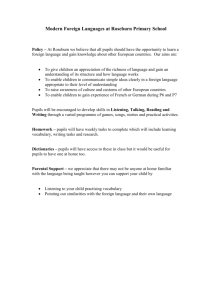
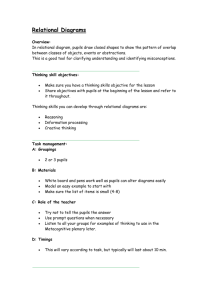
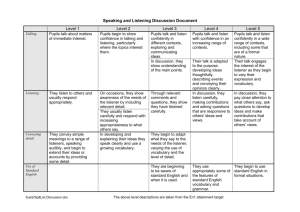


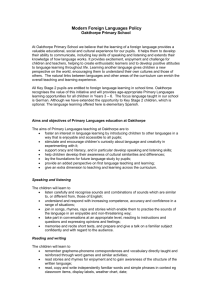

![afl_mat[1]](http://s2.studylib.net/store/data/005387843_1-8371eaaba182de7da429cb4369cd28fc-300x300.png)

